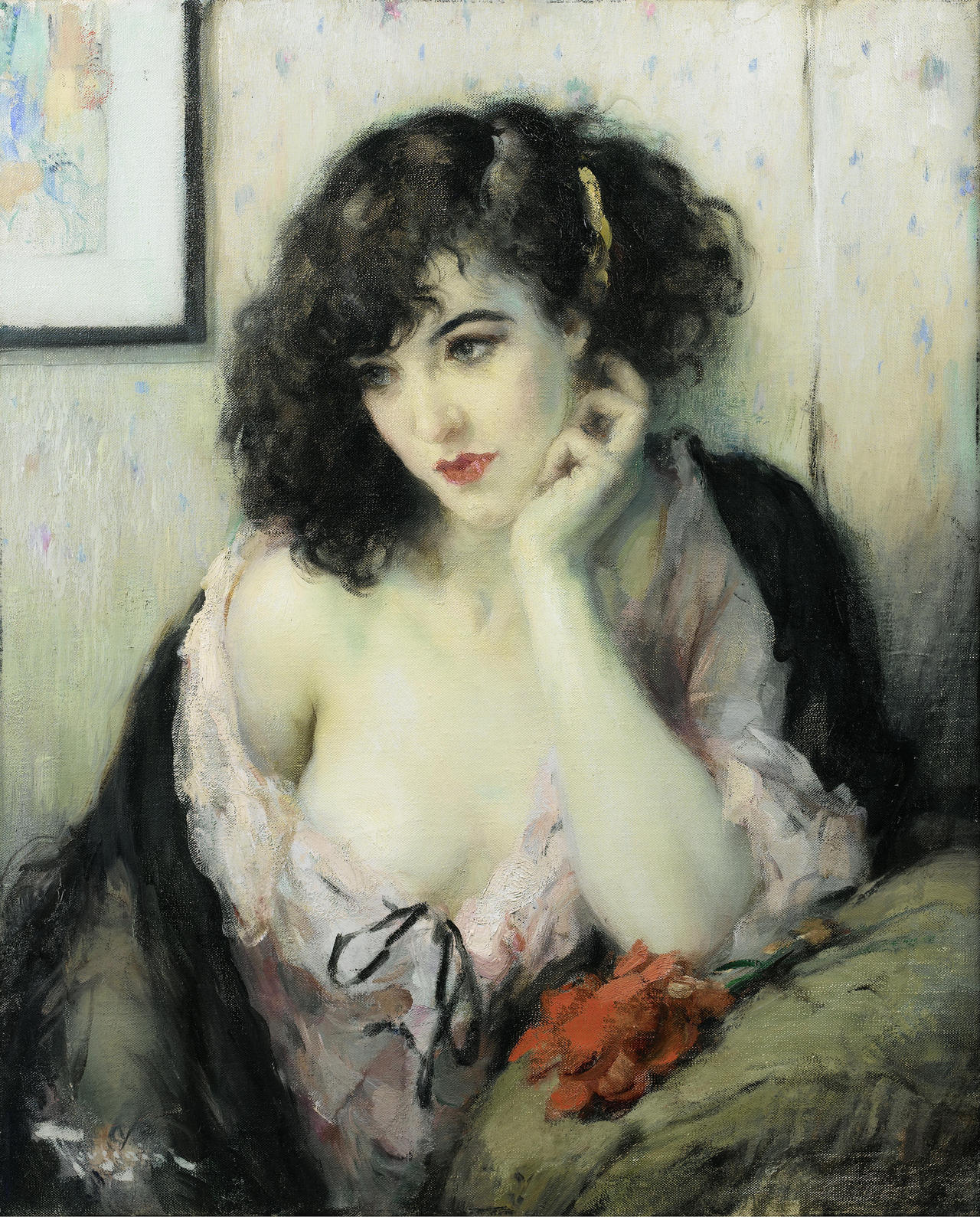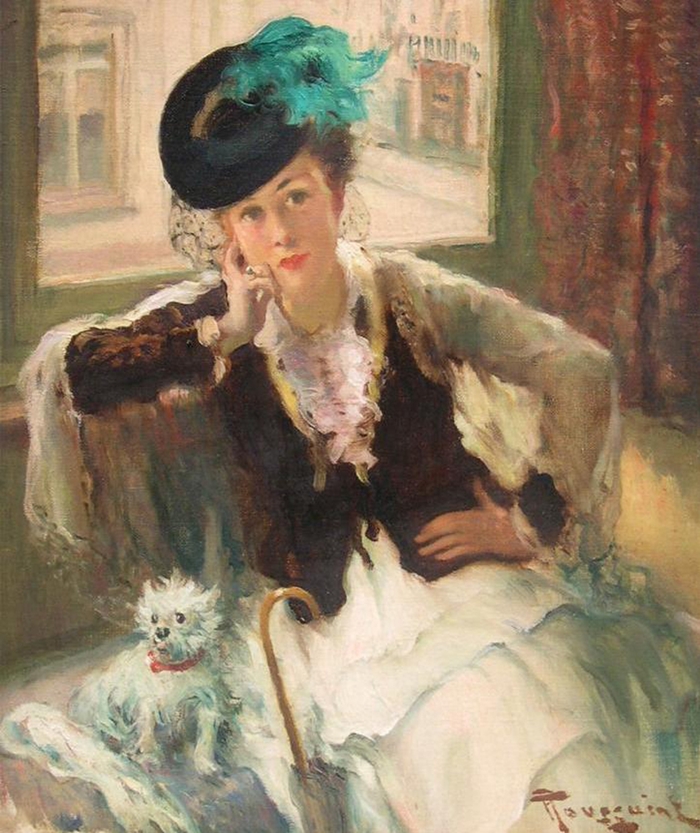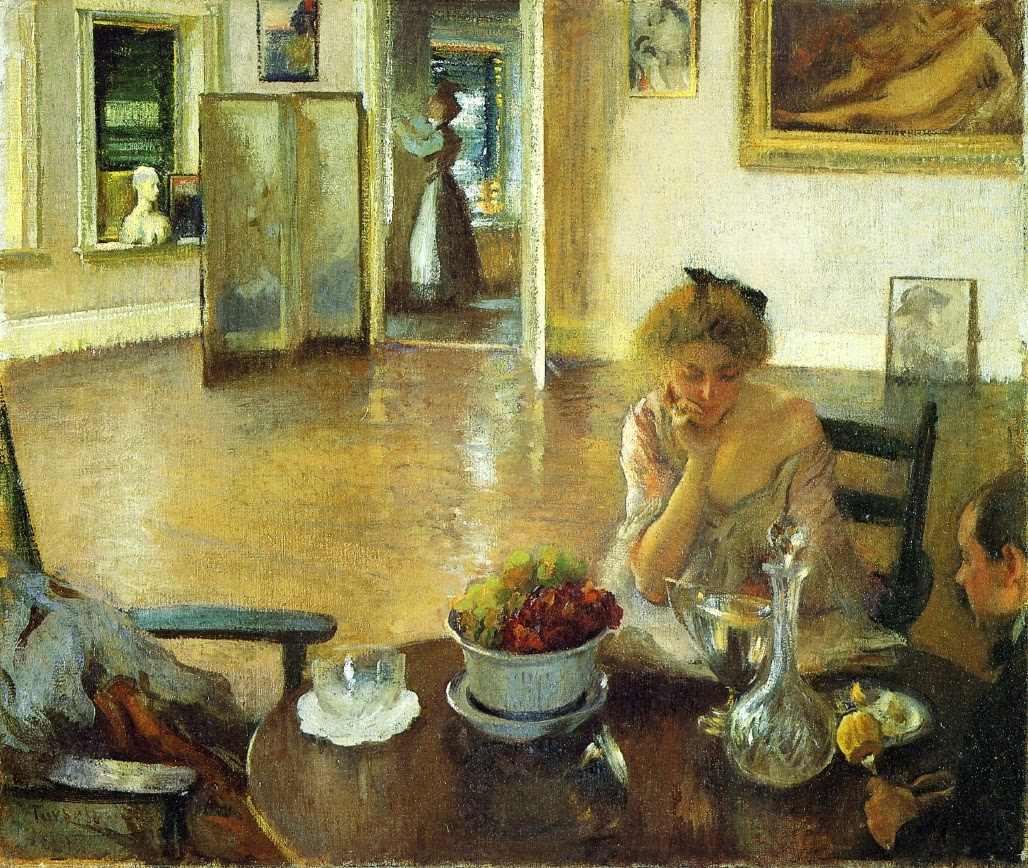Fernand Toussaint
Post-Impressionist painter
Fernand Toussaint (1873-1956)🎨 was equally at ease painting in all categories, from landscapes and seascapes to beautiful bouquets and still lifes, but it is in his intimate portraiture and genre paintings that we discover, according to Mario de Monchi, Toussaint as the “incontestable master of the grace and charm of the woman”.
His classical artistic schooling in drawing gave his work a certain precision, but it was Toussaint’s travels and friendships, notably in Paris and London, that influenced his choice of palette and the tender sensuality with which he endowed the paintings he most loved creating, his portraits of women.
Born in Brussels in 1876, Toussaint was fortunate to come from a family that not only identified, but encouraged his artistic talents as a boy. He enrolled at the Brussels Academy of Fine Arts at the age of fifteen to study under the portrait painter Jean-François Portaels, but when he was eighteen left to finish his studies in Paris, where he trained under Alfred Stevens.
Paris was important for the wider influences the city endowed upon Toussaint: he became acquainted with the works of Nicolas Lancret and Maurice-Quentin Latour whose fêtes galantes and paintings of women were to influence him. Despite his versatility, it was his studies of women that remained dearest to Toussaint’s heart throughout his life. Indeed it was for the portrait of a woman, entitled Spring, that Toussaint was awarded the Paris Salon’s Gold Medal in 1929 and such was the painting’s success that the magazine L’Illustration did him the honour of printing the work as a colour off-print.
Toussaint loved and was appreciated in Paris, but he was also attracted to London and to British painters such as George Romney, Thomas Lawrence, Joshua Reynolds and Thomas Gainsborough in whose works he discovered the poetic and sentimental charm of the Englishwoman.
With his refined taste and sensitivities, Toussaint also excelled as a painter of flowers. He had a particular predilection for roses, often in full bloom, but more modest and even fragile flowers such as pansies and sweet peas were depicted with the same delicate attention and emotion. Although essentially an urban dweller, Toussaint nevertheless experienced the joy of solitude in nature, especially in Belgium, and so he often returned home with landscapes and seascapes of great simplicity as well as interest. His representation of a stroll in front of a cottage garden bursting with flowers, the little group of picnickers in the park and the rural solitude captured around a bridge over the canal in Damme are typical, but he also painted views of the Belgian coast with its dunes and harbours.
Finally, with the growth of branded products and advertising at the end of the 19th century, Toussaint, like many of his contemporaries, also turned to commercial art and produced a series of posters, the most famous of which was for a leading brand of Belgian coffee, entitled Café Jacqmotte, in 1896.
Toussaint died in 1955, in Ixelles (Brussels), and his work fell somewhat into oblivion. Today, many of Fernand Toussaint’s works are in foreign collections, but happily there is now renewed interest in his paintings and with good reason. Toussaint’s works, whether in oil or watercolours, attract us as much through the opulence of his palette as by the harmony of tones and his delicate touch, whether the subject is a portrait, a bouquet of flowers or, somewhat rarer, the still lifes and views of towns, seascapes and landscapes with their deep greens and rhythmic skies.
The attitude of Toussaint’s models is always elegant, with a natural regard and pose and his sitters, whether young or not-so-young, convey the qualities appreciated at the time, a certain hermetic gravity and lack of communication (the creature in Toussaint’s portrait Sphinx, exhibited in 1926, with its sharp regard and elation, is a notable exception). Our attention is drawn to his subject’s face because Toussaint made sure, even by having a ‘reserve’ wardrobe at his studio, that the subject was not eclipsed by extravagant clothes of the period, which might detract from the person or indeed become quickly demoded.
In this new millennium, it is perhaps not surprising that Fernand Toussaint’s sensitive paintings are finding a new audience, which is discovering after far too long an absence this courteous and distinguished master. Toussaint kept his own life and experience discreet, whilst celebrating in his remarkable canvases the image of women in the serenity of an upper middle class apparently without problems, an image portrayed with tact, knowledge and reflexion that has nothing in common with those all too easy images of spontaneous simplicity. In Toussaint’s works there is a pervading atmosphere of tranquillity and discrete light, where silence and reserve convey respectability. | fernandtoussaint.com
Egli divenne l'allievo più dotato di Portaels Jean presso l'Accademia di Bruxelles tra il 1899-1894.
Ha debuttato all'inizio della sua carriera al "Salon des Artistes Français".
A Parigi, conobbe il pittore belga Alfred Stevens che lo incoraggiò a sviluppare l'arte del ritratto divenendo al tempo uno dei più famosi pittori del genere, soprattutto grazie alla sua sensibilità e alla poesia femminile.
L'intera opera di Toussaint riflette l'influenza dell'impressionismo francese, la sua ammirazione per la tradizione della ritrattistica inglese, e la tradizione romantica belga.










.jpeg)
.jpg)
.jpg)
.jpg)
.jpg)
.jpg)
.jpg)
.jpg)
.jpg)
.jpeg)
.jpg)
.jpg)
.jpg)
.jpg)
.jpg)
.jpg)
.jpg)
.jpg)
.jpg)
.jpg)
.jpeg)
.jpg)













